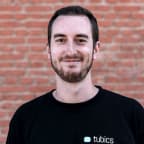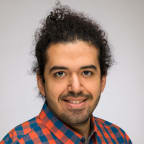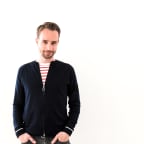TechLead-Story: Michael Rogger, Software Engineering Team Lead at Swarm Analytics

Michael Rogger
Team
How large is the Dev/IT team? How is the team organized by roles?
Our Software Engineering Team currently consists of five Software Engineers. Each team member is involved in the development and shaping of products. The team's focus areas include Deep Learning, Data, High-Performance Applications, and Full-Stack/Platform. I support the team where I can, including building structures/processes, Scrum, recruiting, and software architecture/development.
How is your team organized, and why did you choose a particular structure? What are the advantages and disadvantages?
We organize ourselves as a vertical Scrum team, collaboratively building and shipping the product. In each sprint (bi-weekly), we concentrate on a few specific areas, working in a market- and customer-oriented manner. Delivering product increments at the end of sprints is crucial for us. Everyone works towards a common sprint goal, enabling fast and agile development cycles.
What makes your team special compared to others?
As a vertical, self-organized team, we all work simultaneously and collectively on features, issues, and other topics. We develop, test, deploy, and debug the product together.
Recruiting
How is your department integrated into the recruiting process?
In the final interview round, candidates meet the Engineering Team. This allows both sides to ask questions, work on coding challenges together, and the team decides if the candidate is a good fit.
Is there a specific procedure for new colleagues? How are they integrated?
We have an onboarding process where new colleagues are systematically introduced to the company, our product, technology, and more. Preboarding precedes this, allowing new team members to get to know the entire team and lay the foundation for collaboration. At our company, you are a "Swarmie" from day one.
Besides technical qualifications, what else do you value when looking for IT specialists for your team?
We place a significant emphasis on soft skills and team fit. Applicants should work in a structured, self-organized, and proactive manner, without fear of change and responsibility. We also seek individuals who look beyond their immediate tasks. At our company, you can look forward to building the product from the ground up.
Technologies
What technical challenges do you face?
In areas like Deep Learning, the challenge is to continuously identify state-of-the-art algorithms and technologies, combine them sensibly, and ultimately improve our products.
What technologies do you work with?
We use Slack for communication and Atlassian products like JIRA, Confluence, and JIRA Service Desk as knowledge repositories and for issue tracking. In Infrastructure, we rely on Microsoft Azure Cloud services, Github, and Github Actions (CI/CD). For Deep Learning, we work with State-of-the-Art Convolutional Neural Networks (CNN) using Python/PyTorch/Jupiter Notebooks/Allegro/Github Actions. Our High-Performance Application is developed with C++, OpenCV/Gstreamer, Thread Building Blocks, TensoRT, OpenVino. The platform uses Java, Spring, Microservices, MQTT, REST, SQL/NOSQL, ReactJS, Typescript, and NodeJS.
How has the company's technology changed since its founding?
We started with a C++ SDK for road sign detection/classification. Now, our focus is on building a platform that serves as central management and data aggregation/processing for all Edge Agents. These Edge Agents process camera data on our High-Performance Application (Curiosity) using highly optimized and trained neural networks. The output is GDPR-compliant metadata, which is centrally processed further.
Dev Interview Info




























